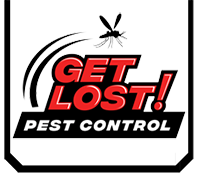Did you know that acrobat ants (Crematogaster spp.) are not just small, inconspicuous insects? These tiny creatures are actually capable of some remarkable acrobatic behavior that sets them apart from other ants.
Measuring less than 5.4 mm in length, acrobat ants are known for their unique ability to raise their abdomen above their head when disturbed, earning them their fitting name. But that’s not all that makes them stand out.
These ants emit an unpleasant odor when disturbed, further adding to their distinctive traits. While they typically nest outdoors in areas near moisture, such as under stones, in stumps, and in rotting logs, acrobat ants can also invade homes, particularly in damp areas like foam sheathing behind siding or roofing near leaking skylights.
Curious about acrobat ants and their intriguing behaviors, habitats, and more? Read on to discover fascinating facts about these acrobatic insects and what you need to know about them.
Key Takeaways:
- Acrobat ants are known for their acrobatic behavior of raising their abdomen above their head when disturbed.
- They emit an unpleasant odor when disturbed.
- These ants typically nest outdoors near moisture but can invade homes, especially damp areas.
- They prefer sweets and meat when they enter homes.
- Preventing and controlling acrobat ants in your home requires thorough inspections and taking measures to correct moisture problems.
Characteristics and Physical Identification of Acrobat Ants
Acrobat ants, known scientifically as Crematogaster spp., are small ants that possess unique characteristics that set them apart from other ant species. These characteristics, along with their physical appearance, aid in their identification.
Size and Coloration
Typically measuring less than 5.4 mm in length, acrobat ants are relatively small compared to other ant species. Their coloration can vary, with some species exhibiting a reddish or yellow hue. When viewed from above, their abdomen is heart-shaped, making it a distinctive feature to look out for.
Unpleasant Odor and Abdomen Behavior
When disturbed, acrobat ants emit an unpleasant odor as a defensive mechanism. This helps in distinguishing them from other ant species. However, the most recognizable behavior displayed by these ants is their acrobatic response to threats. When feeling threatened, the worker ants of acrobat ant colonies raise their abdomen above their head, giving them their renowned name “acrobat ants.”
Nesting Habits
Acrobat ants typically construct their nests in areas with high moisture levels. Searching near moisture-rich environments is key to identifying their nesting sites. These ants can be found nesting under stones, in stumps, and within rotting logs. In urban settings, they may invade homes and nest in damp areas, such as foam sheathing behind siding or roofing near leaking skylights.
Feeding Behavior
While acrobat ants primarily feed on insects and honeydew in their natural habitats, their preferences shift when they invade homes. Inside residential properties, they are drawn to sweets and meat. Identifying their food sources can aid in pinpointing potential entry points and implementing effective pest control measures.
Accurately identifying acrobat ants based on their characteristics and physical features is crucial in managing and controlling infestations. Being aware of their size, coloration, abdomen behavior, nesting habits, and feeding behavior can help homeowners or pest control professionals devise targeted strategies to mitigate the presence of these ants.
Acrobat Ants in Idaho: Behaviors, Life Cycle, and Habitats
Similar to their counterparts in other regions, acrobat ants in Idaho display consistent behaviors, life cycle patterns, and preferred habitats. These resilient ants establish their nests outdoors, often seeking locations with ample moisture, such as under stones, in stumps, or within rotting logs. When venturing into Idaho homes, they commonly take up residence in damp areas, such as foam sheathing behind siding or roofing near leaking skylights.
Feeding habits of acrobat ants in Idaho align with their species tendencies. Outdoors, they primarily forage on insects and honeydew. However, when invading homes, they develop a preference for sweet and meaty food sources. To ensure their survival and propagation, acrobat ant colonies follow a distinct life cycle. They produce male and female winged swarmers that mate and disperse, initiating their independent colonies throughout the surrounding environment.
Residents of Idaho should be knowledgeable about acrobat ants and their behaviors to effectively prevent and control infestations. Regular inspections, remedying moisture problems, and implementing effective pest control measures are crucial for managing acrobat ants in Idaho. By being proactive and informed, residents can safeguard their homes and maintain a pest-free environment.
For help if your ant infestation gets out of control, Call Get Lost Pest Control.




